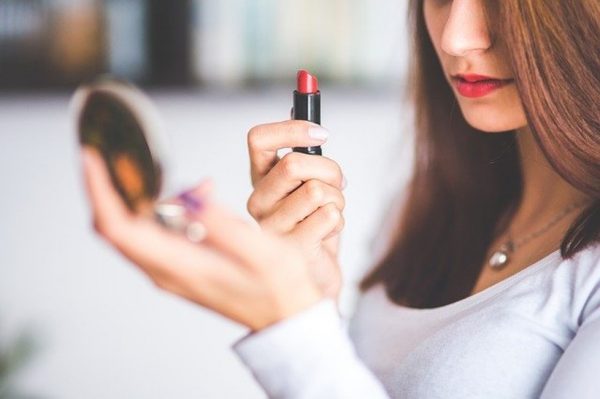
Mirror, Mirror on the wall – Body Image obsession
If a person feels and obsessed about their appearance and all the time think that it need to be fixed (even it is normal) and goes beyond ordinary to fix it then it is obsessive body image. Some concern about one’s appearance is normal. But an obsession with one’s appearance is not. Body image obsession is also called body dysmorphic disorder.
Mirror, Mirror on the wall – what is wrong in the image ?
Body obsession can develop when a person suffers from extreme body dissatisfaction. Their thoughts and feelings about their body image can become an obsessive fixation that will influence their decisions and activities. People with body obsession can be fanatically preoccupied with their physical appearance. They can go to great lengths to change and preserve a body shape, weight or size. This includes dieting, excessive exercise, heavy makeups, steroids and/or plastic surgery.
What is Body Dysmorphia Disorder (BDD)?
BDD is a distressing condition which is often associated with depression, social anxiety and feelings of shame. At its center is a fairly specific negative body image, marked by an intense preoccupation with a perceived flaw in your physical appearance.
What factors influences body obsession and dissatisfaction?
It is a mindset that can be influenced by several external factors. For example, family, friends, acquaintances, teachers and the media all have an impact on how a person sees and feels about themselves and their appearance. Individuals in appearance-oriented environments or those who receive negative feedback about their appearance are at an increased risk of body dissatisfaction and/or obsession.
Some of the areas that people with BDD report as being problematic include (but are not limited to): skin or complexion, nose size or shape, eyes or eyebrows, stomach, breast, legs, lips, teeth or smile, arms, height, scars and muscles. Individuals with BDD are often concerned that the body part is too big or too small, not the right shape, asymmetrical, or out of proportion to the rest of their body.
What are the warning signs of Body Obsession?
There are several warning signs to look out for that show when a person’s focus on their weight and/or body shape has transitioned from ‘just trying to stay healthy’ to a dangerous obsession:
- Preoccupation with eating, food, body shape, and weight – at the expense of all other interests,
- Extreme body image dissatisfaction
- Extreme dieting behavior
- Standing in front of mirror for longer hours and disapproving the image
- Excessively restricting and/or counting calories
- Compulsive or excessive exercising – spending more time in fitness centers or gym
- Use of legal or illicit substances to alter the body size, weight or shape
- Repetitive or obsessive behaviors relating to body shape, size and weight
- Fixation on attaining the physical appearance of celebrities, models and even inanimate body
- Trying to replicate the effects of photographic manipulation through dieting or exercise
- Feelings of guilt and shame when exercise is missed
- Feeling guilt when particular foods are eaten or served
- Constantly weighing and measuring oneself
- Obsessive focus on and discussion of body size, shape and weight
- Trying various types of diet and constantly changing dieting habit
The four aspects of body image
- How you see your body is your perceptual body image. This is not always a correct representation of how you actually look. For example, a person may perceive themselves as overweight when they are actually underweight.
- The way you feel about your body is your affective body image. This relates to the amount of satisfaction or dissatisfaction you feel about your shape, weight and individual body parts.
- The way you think about your body is your cognitive body image. This can lead to preoccupation with body shape and weight.
- Behaviors in which you engage as a result of your body image encompass your behavioral body image. When a person is dissatisfied with the way they look, they may isolate themselves or employ destructive behaviors (e.g. excessive exercising, disordered eating) to change appearance.
What are the risks associated with Body Obsession?
- Significant distress or impairment in social, occupational or other important areas of functioning
- Development of a clinical eating disorder
- Development of Body Dysmorphia Disorder
- Physical disfigurement
- Depression
In BDD, usually the actual flaw a person is worrying about is so slight that others do not really notice or consider it important. In some cases, the flaw may be imperceptible to others. However, even if this is pointed out to a person with BDD, they will continue to worry about that area of their body and often believe that others are thinking negatively of them because of it.
If you suspect that you or someone you know is having problems with Body Obsession talk to your doctor. It is important to seek help immediately – the earlier you seek help the better your chances of recovery.
,
Reference & for more reading:
- https://thebutterflyfoundation.org.au
- http://www.nedc.com.au
- https://www.nationaleatingdisorders.org/what-body-image
- Image credit: Photo by Romain V on Unsplash (Free for commercial use)
Author: Sumana Rao | Posted on: June 26, 2017
« Human fetus can recognize face like visual stimuli Use medicines safely »






















Write a comment